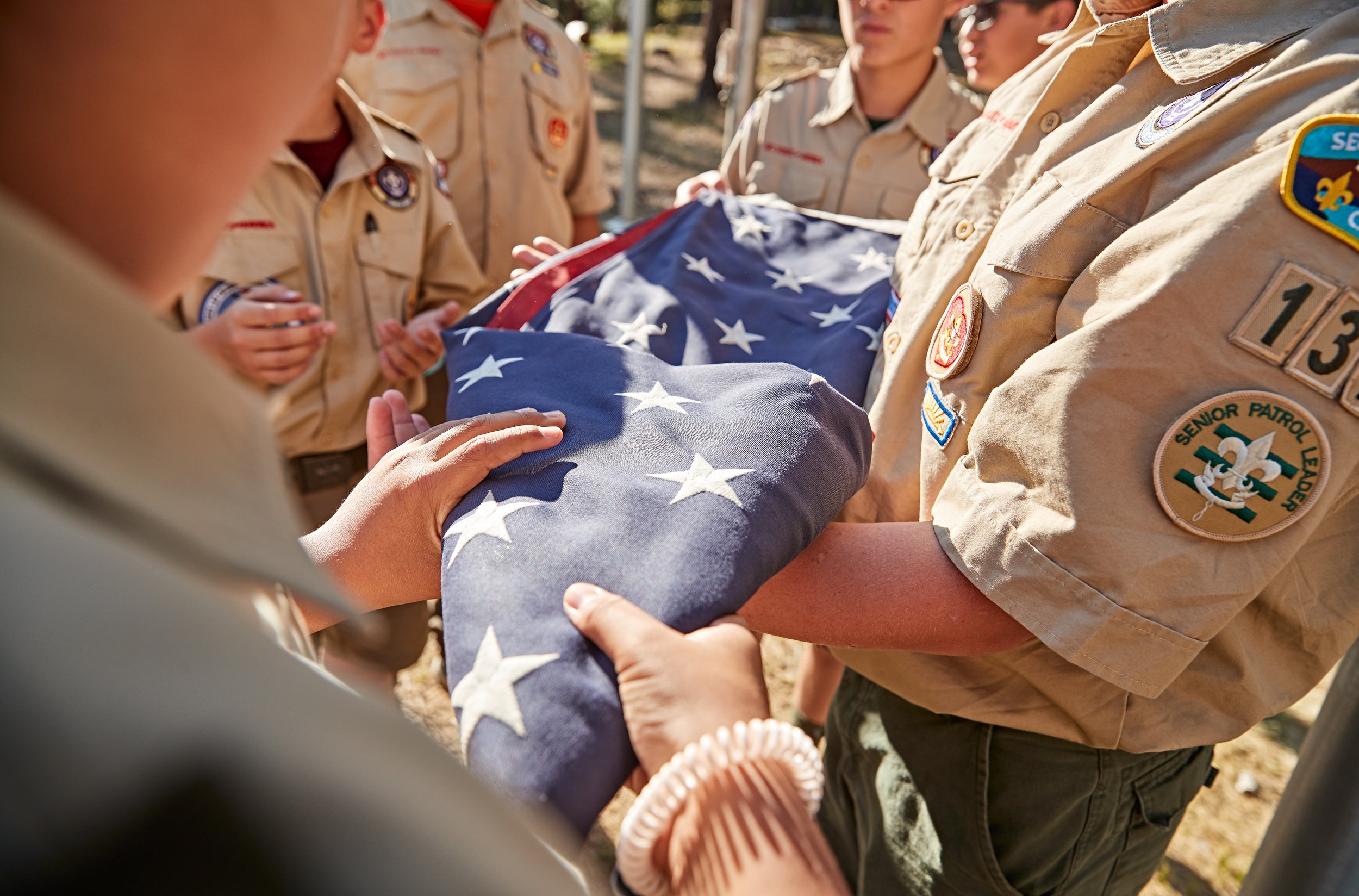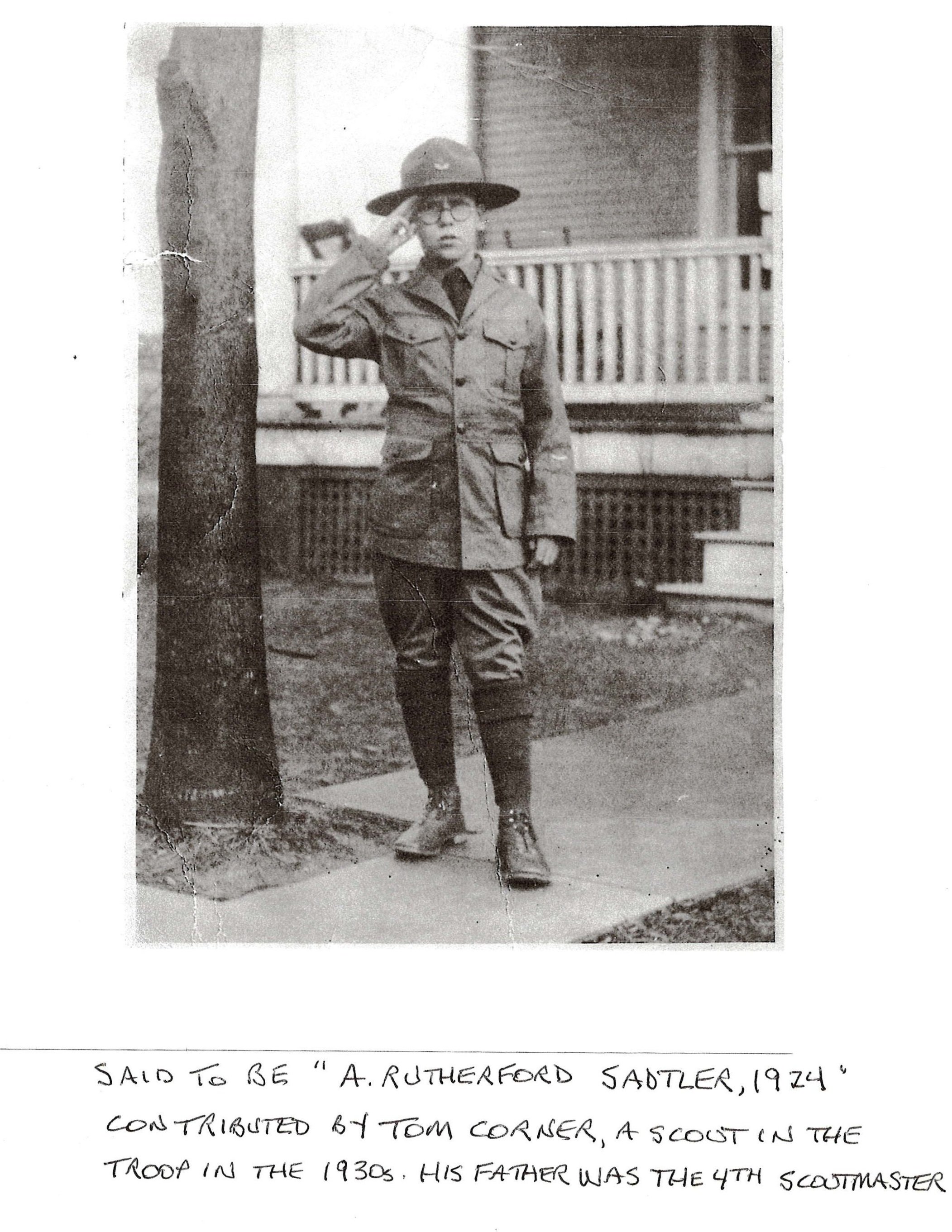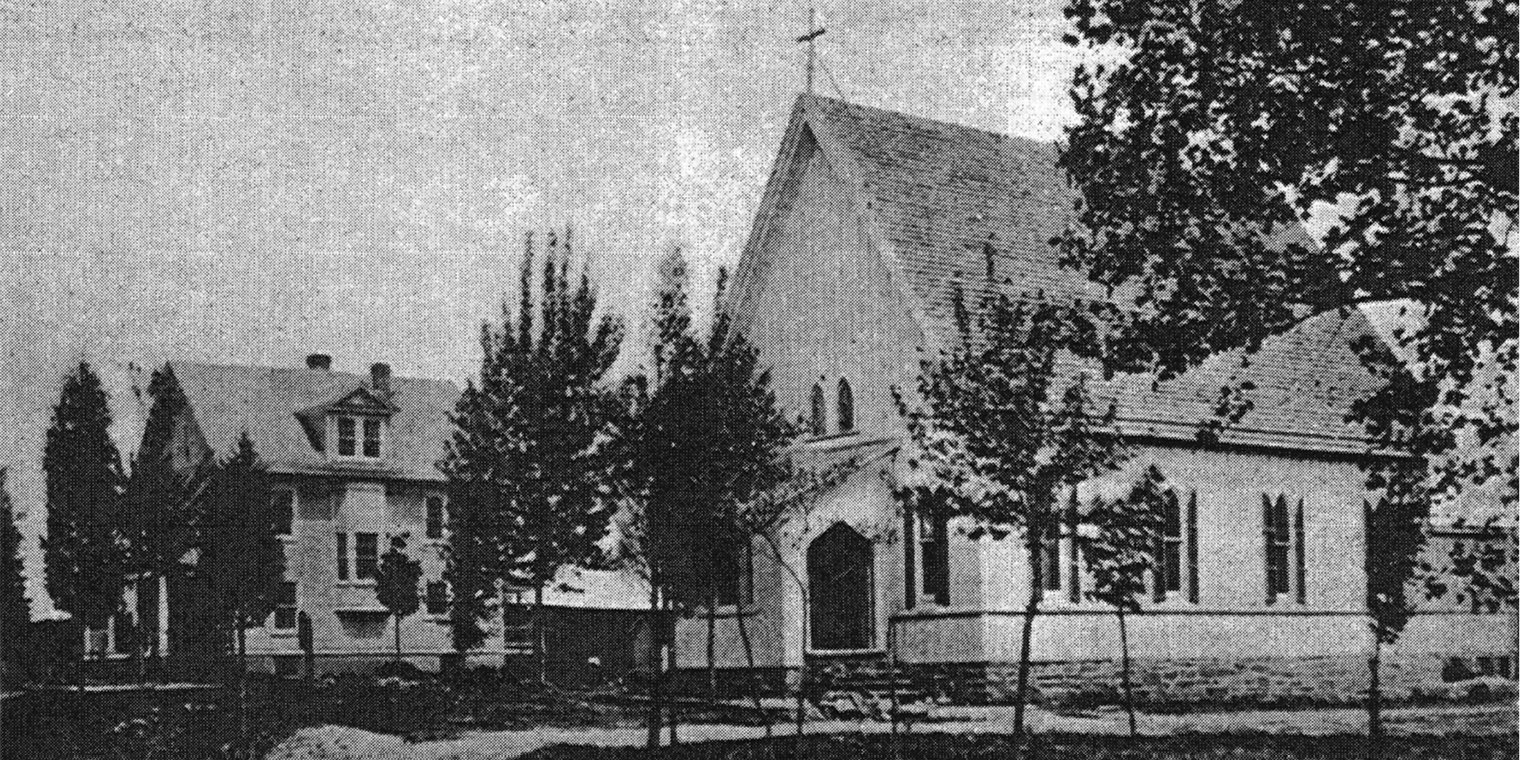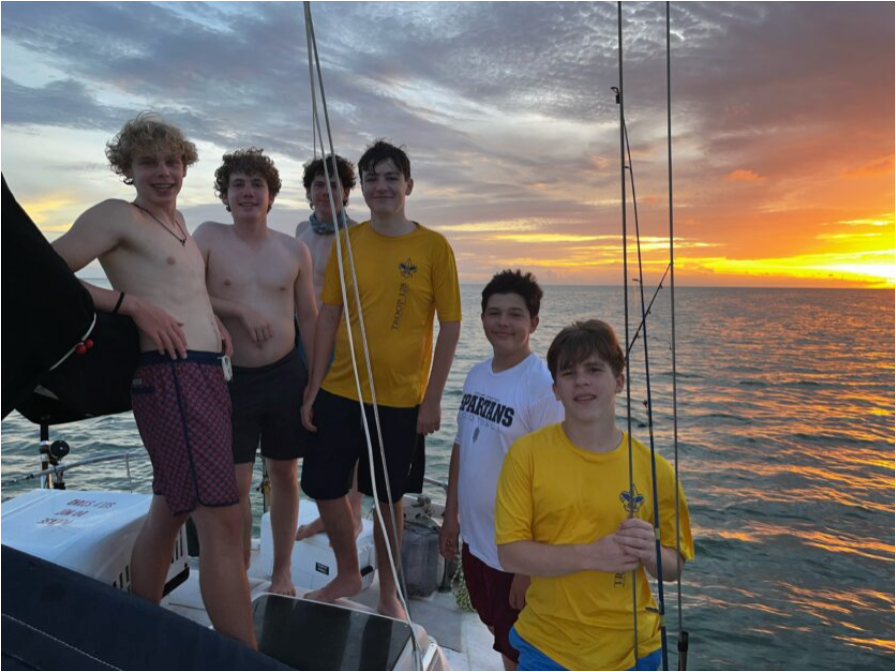
Explore Our Troop’s History
Over the past century, Troop 128 has been more than a Scouting community; it's been a tapestry of countless stories, woven together by the shared experiences of former Scouts, leaders, parents, and dedicated supporters. As we celebrate our 100th anniversary, we're excited to open the pages of Troop 128's history and invite you to explore a collection of tales that capture the essence of our remarkable journey.
Founded in 1924
Scouting in the 1920s was marked by rapid growth and widespread enthusiasm, with the movement expanding globally, emphasizing outdoor adventures, developing character, and fostering a strong sense of camaraderie among young Scouts.
Scouts BSA Troop 128 was "chartered," that is, organized and officially recognized by BSA, on February 24,1924, at a time when McLean was largely dairy farms. It started with ten Scouts, and met at Franklin Sherman High School, on the site where the Elementary school is now. The First Scoutmaster was John M. Hart, who served only from February to September 1924. The first Troop Committee was comprised of Messrs. F.H. Bogarus, T.M. Corner, and C.A.Grubb. However, Harrison S. Krider, who served as Scoutmaster from 1924-28, is generally referred to as “First Scoutmaster." The first Assistant Scoutmaster was Ralph Thompson, who took up his duties on June 14,1925. By 1926, the Troop was meeting in the second story of a barn next to the W.C. Haines residence. In 1928, the Troop moved to St. John's Episcopal Church, which was located in central Mclean until it moved to its current location in the mid-1950s. By 1929, the Troop was sponsored by the "School & Civic League, Inc.," and meeting in the St. John's Church “Community Hall." Mr. Theodore M. Corner served as the first long-term Scoutmaster, from 1929 until 1937.
What were Troop 128’s first Scouts like? According to First Scoutmaster Krider, “All of the Scouts lived on farms. It was not easy to get to meetings — the Scouts usually walked! Meetings ended abruptly around 4 p.m. when it was time for the Scouts to rush home to milk the cows and do their other farm chores.”
A 40-Mile Adventure for Farm Boys of McLean
In the very first year of the Troop, the Scouts decided that they wanted to go to Annapolis to “see the sights." There were very few motorcars in the McLean area at that time and few long-distance roads. The Scouts were all strapping "farm boys" and physically fit, so they built a platform for their camping gear, they hooked it up with bicycle wheels and a long extension and crossbar, and with the Scoutmaster they set out for Annapolis, a distance of more than forty miles (on foot! yep!) Even though the first highway between Washington, D.C. was just being built and not all the bridges were "in," the Scouts and their Scoutmaster somehow made it all the way to Annapolis, camped in a relative's backyard and "saw the sights" for several days, then walked all the way back to McLean. The Scouts were particularly impressed by a visit to Bladensburg, Md., where they toured the Civil War "Battle of Bladensburg” site.
As remembered by “First Scoutmaster” Harrison S. Krider and shared at the Troop's 50th Anniversary in 1974.
Scouting in the 1930s and 1940s saw resilience and adaptability as it navigated the challenges of the Great Depression and World War II, with a focus on community service, patriotism, and developing essential life skills for young Scouts.
The Troop was briefly inactive during World War II, probably because so few men were available to assist with the Troop. It was then rechartered on January 5, 1944, under Scoutmaster Thomas H. Wigglesworth, with the School & Civic League again as sponsor. The sponsorship then passed to St. John's Episcopal Church some time in the next few years.
Scouting evolved significantly from the 1950s to the 1970s in response to changing societal norms and the shifting needs of young people.
During this period, Scouting became more inclusive, diverse, and adaptable, emphasizing diversity and equality, expanding outdoor adventures, modernizing its programs to align with technological advancements, and fostering leadership development. Additionally, Scouting increasingly engaged in environmental awareness, community service, and international exchange programs. These changes ensured Scouting remained relevant and beneficial for young people during this transformative era.
Much of Troop 128’s history was obtained in the early 2000s from very poor quality microfiche at the Scout Center. Unfortunately, though, records for the period from 1971- 1979 were lost in a fire at the Scout Center. We do know that there was one “Quadruple Eagle” ceremony for four young men at the 50th Troop Anniversary in 1974.
There was a very active Webelos unit at Pack 1134 in 1974. U.S. Navy Captain Paul Polski, father ofAssistant Scoutmaster Dave Polski, was the head of the pack. Mr. Frank Naylor, later Secretary of Agriculture, decided to become a Scoutmaster and take these Webelos Scouts as a unit to a troop. Mr. Naylor turned down the troops at the Methodist and Presbyterian churches of McLean. Since he was an Episcopalian, he then looked at Troop 128 at St. John's church. It had only four Scouts, and usually only two Scouts went to meetings. There was very little adult leadership. The top rank of the Scouts was one First Class Scout. Mr. Naylor decided to bring his Scouts to Troop 128, and thereby saved the troop from extinction!
In 1975, our Troop Committee Chairman was Norman Augustine, then Undersecretary of the Army. After that, he served for many years as Chairman and CEO of Martin-Marietta Corp.(now Lockheed-Martin). He was also a prolific author of popular books on business. Norm shared many of his Scouting adventures with his son Gregory, an Eagle Scout who has since passed away. The Troop Committee Chairman of Troop 128 in 1976 was Gene Sizemore, who was subsequently promoted to Admiral, and later served as Executive Director of the Navy Association. Bill Purdom became Scoutmaster after Frank W. Naylor, Jr. Purdom was a Navy Captain and a former commander of nuclear submarines.
As Recounted By George LaRoche, ASM 1970s/early 1980s, and Jack Hannon, Scoutmaster 1985-1989
Source: YouTube, Periscope Film
Click above to watch the 1970s “You Never Know” commercial promoting Boys Scouts of America and featuring President Gerald Ford among others.
Scouts present Norm Augustine, center, with a flag flown over the Norman R. Augustine Twelve Points Ceremonial Plaza at Summit Bechtel Reserve.
“You don’t have to be rich to be in the Boy Scouts, and you don’t have to be smart. You just need to live by the principles of the Scout Oath and the Scout Law.”
Memories from the 1950s-1970s
“Troop 128 planned a camping trip to the Skyline Drive, and because there were many Scouts that wanted to go, both Scoutmaster Young and Mr. Kent Dodge and Mrs. Dodge drove carloads of Scouts to the camping area. A young and inexperienced reporter for a local paper wrote an article about the camping trip that indicated that Mrs. Dodge enjoyed the day so much she decided to stay overnight. He then added, ‘Also attending was Scoutmaster Clinton Young.’ The story failed to mention that Mr. Dodge was also there! [Another time,] a Troop 128 Scout named Eddie was asked, during a first aid drill, what he would do to treat a case of shock. ‘Nothing,’ he said, ‘I'd stay away; it'll kill you!’
— Clinton V. Young,
Scoutmaster 1950-1957
“When I took over the troop from Clint Young, I thought we ought to try a camping adventure "on our own" rather than at a fixed Scout camp. I spent a day driving around with the Sheriff of Luray, Virginia, Scouting for a good location, and we identified an excellent location on an island on the North Fork of the Shenandoah River, which farmer Henry Gander was willing to let us use. We bought 6 old but very large field tents for $25 each, spent the winter repairing them, then went out to the island a couple days before the Scouts and set up a kitchen tent, a dining tent, and tents for four patrols, each sleeping at least eight Scouts. I hired a retired Army cook to "rustle up grub" for us, and the meals he prepared were sensational. I had some trouble getting the fathers of our Scouts to support this rather major effort, so finally I put in a rule that the Scout couldn't come on the trip unless his father spent at least three days with us. Not only that, the father had to be prepared to teach several skills that I assigned to each of them. Well, the fathers came and loved it, and y'know what, that Fall we suddenly had nineteen adults who became active in the troop! We did this same campout on "Gander's Island" for several years thereafter.
Another time we went camping right near the Paw Paw tunnel on the C & O Canal in Maryland, and no sooner than most of the parents left us it began to rain hard, and it was cold too. Everything got soaked, with night coming on. We finally decided we just had to move our base of operations into the tunnel. We managed to get a large fire going in the tunnel, to warm up the boys, and by the next morning most of what we had was dry.
In l976, Troop 128 planted the “Centennial Tree," a 20-ft. maple, which Betty LaRoche obtained from the old Cappers Nursery on Route 7, maybe about where Moore Cadillac is now. It was planted straight out from the Shears Hall entrance and slightly to the right, about twelve feet from the asphalt. Lawn mowers bashed it continuously, and it died in about 1994 without making it to the "Centennial"!
— Tom Mutschler,
Scoutmaster 1958-1961
Scouting in the 1980s and 1990s continued to provide opportunities for character development, leadership, and outdoor adventures, while also embracing new technology and expanding its merit badge program and international footprint.
During the 1980s and 1990s, the Boy Scouts of America significantly expanded its merit badge program to include badges in emerging fields such as technology, environmental conservation, and personal fitness. Additionally, career-oriented badges, cultural awareness badges, and high-adventure activity badges were introduced, providing Scouts with a diverse array of opportunities for skill development and personal growth. Behind the scenes, Scouting adapted to the digital age by incorporating technology-related merit badges and using computers for record-keeping and communication within troops and councils.
Does it look like there should be some fun photos here? There should! We’d love for Troop 128 Scouts from the 1980s, 1990s, or ANY other time to submit photos for our website, upcoming video and book, and historic archives. And check back here to see what we’ve received!
“We had a very lively young Scout from Oman by the name of Mammoun Albakry. We went to summer camp at Goshen and went down to the lake for the swim check, and I asked Mammoun, 'Can you swim?' 'YES!!!' was the answer. To pass the test, you had to jump into water that was over your head, swim 25 yards to a point, swim back, repeat that a second time, then do the 'stationary float' for a minute or so. Well, Mammoun jumped in the water with the rest of the troop, swam down the course, came back again, swam down the second time, but he had a lot of trouble coming back, and we had to pull him out. It turned out he had never gone swimming before, but he'd seen it on television and said to himself, 'I can do that!' And he almost did!”
— Ed Gerry, Scoutmaster 1981-1982
Scouting’s Impact on One Young Man’s Life
“The memory that comes to my mind as the most unique was my experiences in New Mexico at Philmont. I am most fond of the time we spent on the trail near Mt. Phillips, this was the first time that I had been exposed to any type of altitude, I am sure Mr. Hannon is none too anxious to go back as it was not the most enjoyable experience. The experience of climbing, albeit on a trail, for several hours before cresting out above 11,000 ft was memorable in of itself the sight of snow still left in July was unexpected. The sheer vastness of the wilderness changed the way I thought of the world. lt showed me that it was possible to travel out of civilization for long periods of time. The recognition of these possibilities sparked a desire to climb that grew as I decided to go out west to the University of Washington, in Seattle. I drew upon my background as a Scout and the basics of common sense outdoor travel and survival that I had learned in the troop, adding to this base a passion of technical climbing and glacial travel. The combination has left me with the tools to deal with some of the most desolate and spectacular environments on earth, high alpine terrain. To date I have climbed Mt. Hood (11,235) in Oregon, Mt. Baker (10,778) in the winter, Mt. lndex (7.800), Barring Mt. (6,890), Completed a traverse of the crest of the Tatoosh range (6,000-8,000), I have made it to the summit twice in the summer and the 12,000-ft level of Mt Rainier (14,441) in winter, but was turned back by weather, hopefully to finish next year. All of these trips would never have been possible if I had not been exposed to the opportunities that are out there if you are well educated. The Scouting program is one of the best educators that can prepare you to be comfortable and competent in environments ranging from the city to the peak of Everest. I am indebted to the gifts Scouting has given me.”
— Matt Levy, Troop 128 Eagle Scout in the mid-1990s
The 2000s have been a period of remarkable transformation for the Boy Scouts, now Scouts BSA.
Notably, it has embraced inclusivity by welcoming openly gay Scouts and leaders and opening its ranks to young women, resulting in all-female troops. This period has also seen the organization deepening its commitment to youth protection and adapting to modern interests with new merit badges like cybersecurity and robotics. As Scouts BSA navigates these changes, it maintains its core mission of character development, leadership training, and outdoor adventure, ensuring it continues to empower young people for success in a rapidly evolving world.
More than 150 Eagle Scouts have emerged from Troop 128, and on April 11, 2022, Rishika Singh became the first female from the troop to achieve Eagle Scout status.
In Summer 2023, Troop 128 sent two sets of boys to Sea Base high adventure camps. Other high adventure treks over the years have included Lenhok’sin, Philmont, and Northern Tier.
Have more to add to Troop 128’s rich history?
We're creating a special centennial archive and invite you to submit your photos and stories. Whether it's a snapshot from a memorable camping trip, a funny Scouting tale, or a heartfelt reflection on your journey, your contributions will help us document our Troop's incredible legacy.















